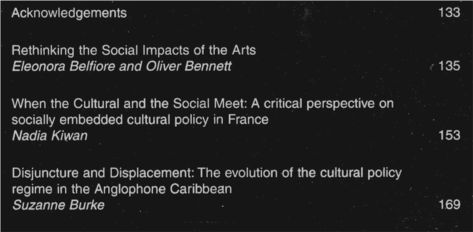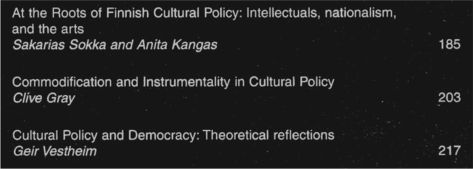| Cultural Policies Current Contents 6.2007 | Table of contents | Next page | Previous page |
|
|
This issue brings together the first part of a selection of edited papers
which were presented at the Fourth International Conference on Cultural
Policy Research (ICCPR) in Vienna in July 2006. Of special importance are the articles that deal with the link between the culture and the social:
Worth reading is Vestheim's paper on the relationship between cultural policy and democracy (p.217-236). He reflects on cultural democracy, democratic cultural policies and the power of religion in political developments, and discusses then five democracy dimensions of cultural policy. For Vestheim, cultural policy is by definition instrumental, as culture in policy-making terms has no intrinsic value. He differentiates three types of instrumentality that justify public intervention in culture: aesthetical and educational instrumentality, economic and social instrumentality, and, based on the democracy argument, political instrumentality. To view the publisher's table of contents with abstracts, please click on this external link. A full text online version is available for users within the Council of Europe via Swetsline. |
| In case you prefer the paper version on loan, click here!
|

![]()
![]()
![]()

| |
|